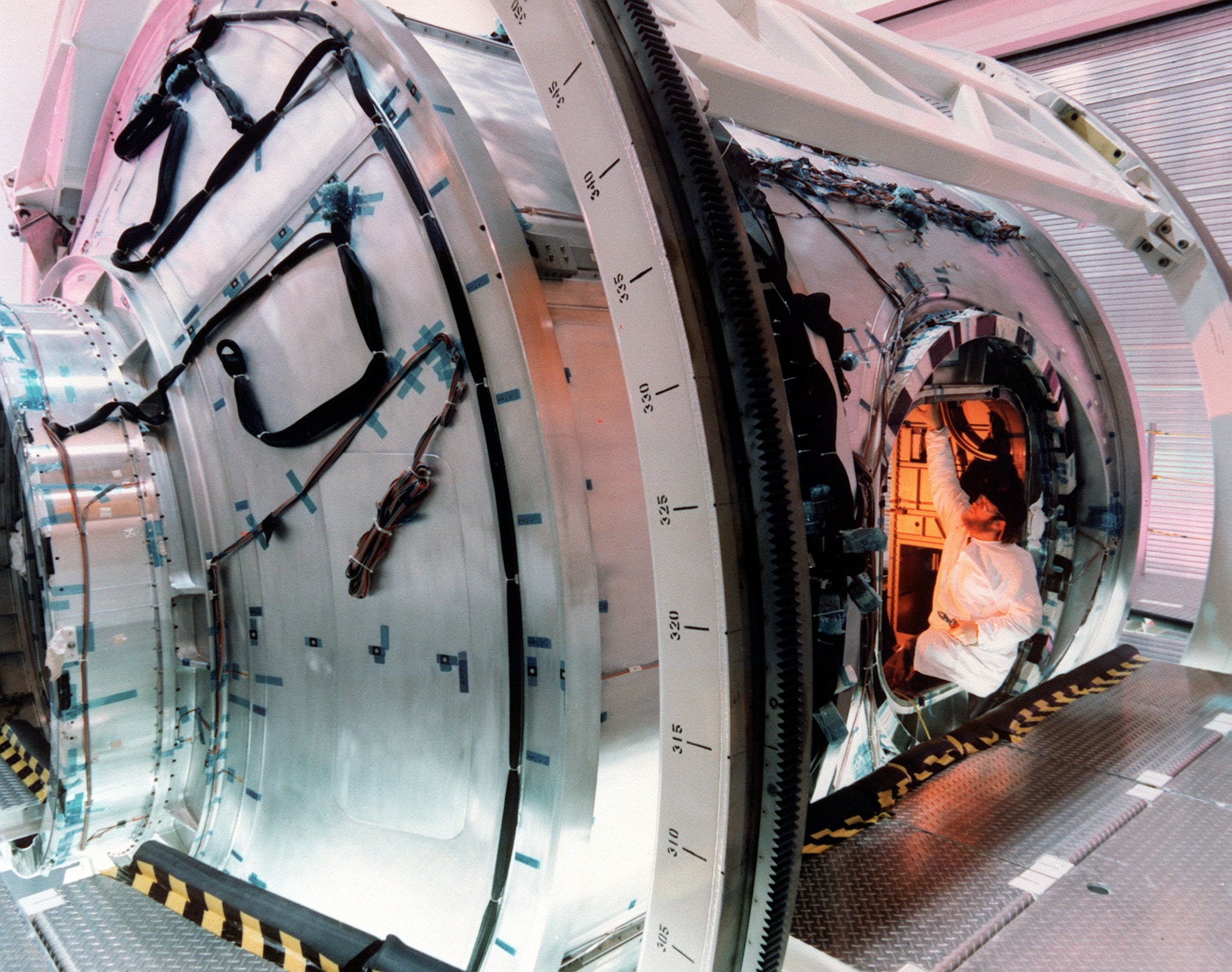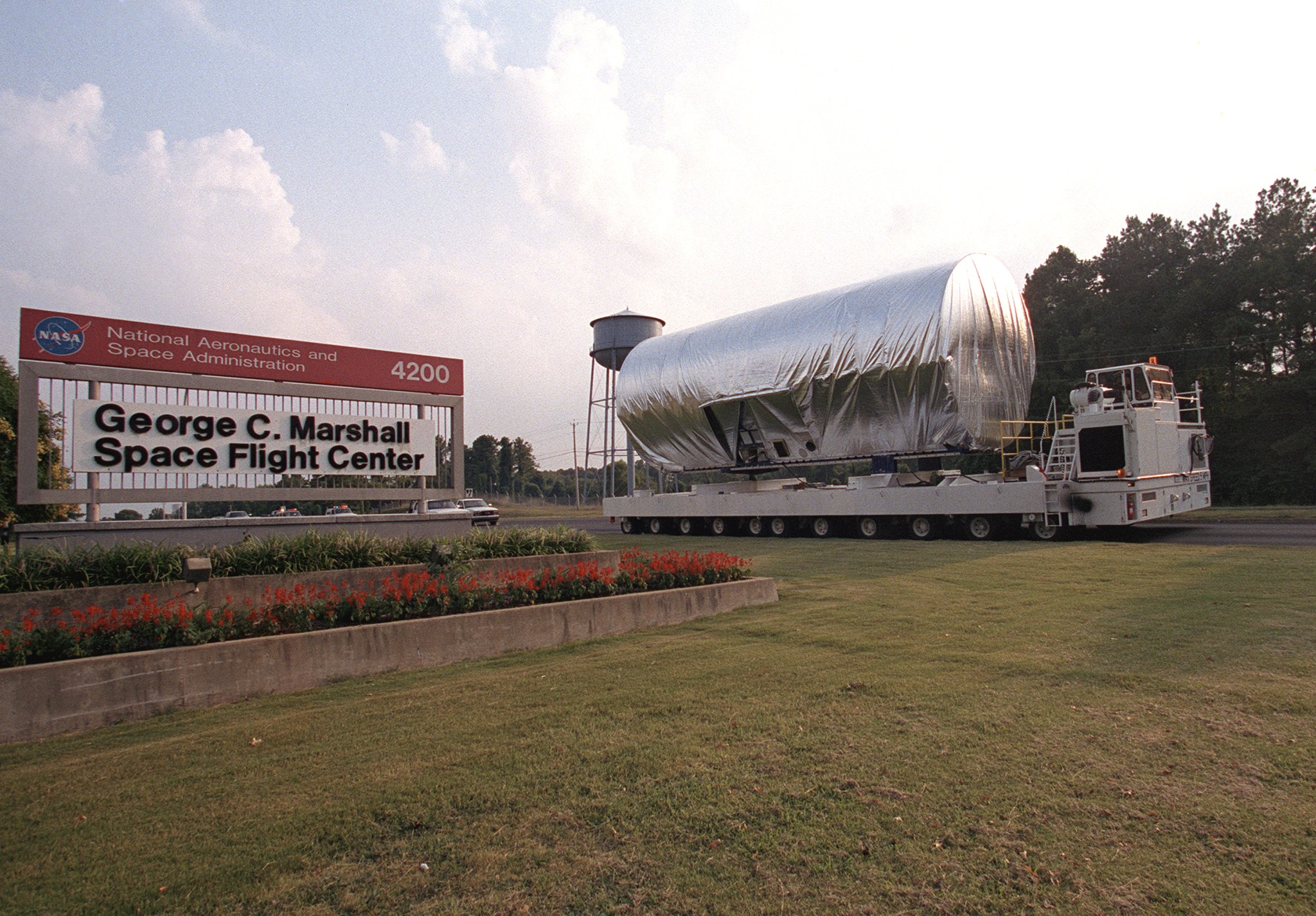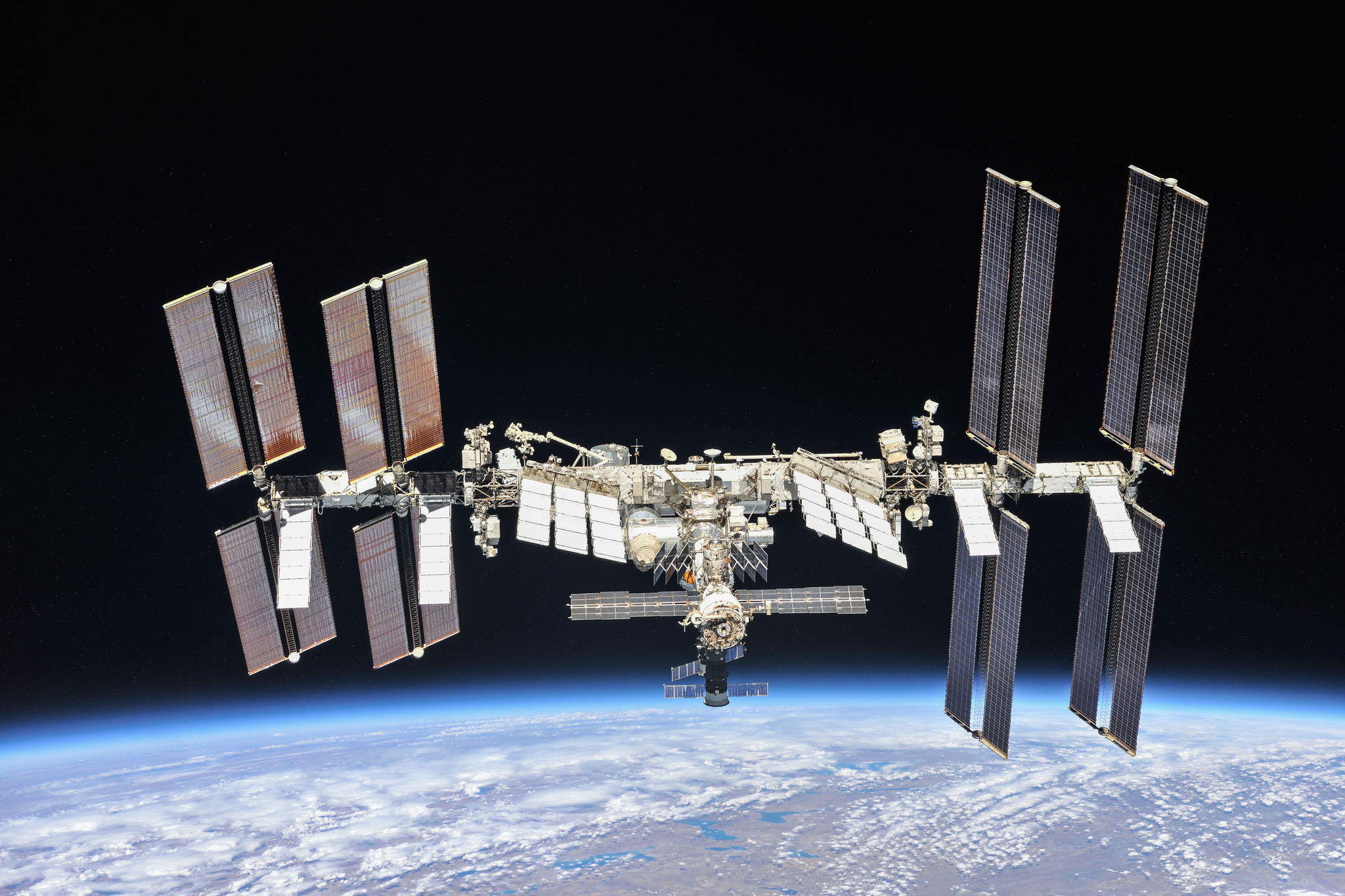


High above the turn of the world, a mammoth construct largely made of aluminum, titanium, and human ingenuity – big as a football field, easily seen from the ground with the naked eye – skates forever along the edge of the sky, while its pioneering crew works to prepare the way for new human journeys to the Moon, Mars, and beyond.
NASA is marking 20 years of continuous crew operations in Earth orbit aboard the International Space Station, comprised of a 360-foot integrated “backbone” truss structure, four sets of 112-foot-long solar arrays, and 16 pressurized modules containing crew living quarters and state-of-the-art laboratories. Designed, built and tested by NASA and its 15 partner nations, its elements launched to orbit one by one over a 13-year period, the station is one of a kind. It weighs more than 925,000 pounds. It has roughly the interior volume of a six-bedroom house. It’s often the third-brightest object in the night sky.
The structure provided the backbone to transform the station into the orbiting laboratory it is today – and many of its largest structures were built, tested, and readied for flight by teams at NASA’s Marshall Space Flight Center in Huntsville, Alabama, working in partnership with American contractors and international firms around the world.
“We helped give the station good bones,” said retired Marshall engineer Ann McNair, a deputy division chief in Marshall’s Systems Analysis & Integration Laboratory in the late 1990s. “And on that foundation, we built a 20-year legacy of engineering and scientific discovery.”
Node 1: Unity of Purpose
The Boeing Co. of Huntsville built Node 1 – later to become the Unity module – as well as the Destiny laboratory module and the 6-ton Joint Quest Airlock at Marshall, in the same manufacturing bays and clean room facilities where NASA built the first Apollo-era Saturn V rockets.
At the time of Unity’s launch, Marshall engineer Brian Mitchell, who served as Node 1 element manager and subsystem manager for hatches and common berthing mechanisms, called it “one of the most complex modules on the station.” Functioning as a central anchor point, it featured six berthing ports to connect adjoining modules during assembly. The Boeing and Marshall team designed the Common Berthing Mechanism, the innovative linkage that physically connects all station elements, including the Japanese and European modules and visiting commercial spacecraft.
“As the first U.S. element to fly, Node 1 served as the fleet leader for many components and subsystems,” Mitchell recalled. “There was tremendous enthusiasm within the Boeing and NASA teams – knowing it was our opportunity and responsibility to deliver this hardware,” he said.
Unity was mated with the Russian Zarya module in 1998, paving the way for the Zvezda module in 2000 – and continuous human occupation ever since. Today, Unity lives up to its name, functioning as a sort of college-dorm hallway, connecting the main living and working areas but more importantly serving as an informal spot for crews to gather, eat meals, and relax between work assignments.
Nodes 2 and 3: International Harmony
Marshall also partnered with European Space Agency (ESA) contractor Thales Alenia Space – formerly Alenia Spazio – in Turin, Italy, to test, integrate and deliver Node 2 and Node 3, later named Harmony and Tranquility, respectively.
Steve Pavelitz was a systems engineer tasked with managing module-to-module interfaces for Node 2, working with Boeing, Alenia, and engineers at Marshall and NASA’s Glenn Research Center in Cleveland. Led by the NASA Vehicle Office at Johnson Space Center in Houston, the Marshall team provided technical insight from node development and testing through launch and assembly in space.
“We had oversight of everything inside the modules, from ventilation valves and electrical equipment to power connections for the science racks, lab hardware, and life support equipment,” Pavelitz said. “It was an ongoing systems integration challenge, as the station’s configuration evolved on the fly, instantly changing specifications for structures and connective elements – most of which were being individually built and tested at facilities sometimes separated by thousands of miles.”
Jimmy Grisham, a 20-year NASA engineer who retired in 2011, was a Marshall technical advisor, part of a nodes project team tasked with overseeing timely delivery to Italy of electrical and communications hardware and instrumentation. Grisham and other Marshall engineers even traveled periodically to Torino to assist with final installation and integration of all node hardware and support technology.
“We were always glad to work with our Italian and European counterparts, who were as proud as we were to be part of this historic endeavor,” Grisham recalled. “The work sealed friendships among many of us around the world. We still keep in touch.”
Node 2, flown to orbit in 2007, expanded crew accommodations from three astronauts to six, provided an additional docking point, and now connects the Destiny lab, ESA’s Columbus laboratory and the Japan Aerospace Exploration Agency’s Kibo laboratory. Node 3, flown and installed in 2010, added regenerative life support systems, an exercise space, and the Cupola observation module. The latter, with its large, Earth-facing windows, offers the crew stunning views of their homeworld 250 miles below.
Shoring Up Support: The Backbone Truss
As for the gargantuan framework that supports the orbiting space platform, Boeing was NASA’s prime contractor on the station’s integrated truss structure. It was fabricated segment by segment in 2001-2002 in the company’s Huntington Beach, California, facilities, then shipped to Marshall and other NASA sites for flight readiness testing.
On-site at Marshall, NASA and Boeing engineers tackled integration and testing of the S1 truss, the primary central backbone of the massive framework. They installed critical flight hardware, verified electrical connections and fluid line integrity, and used Marshall’s cutting-edge test hardware to simulate the dynamic stresses endured by the truss during launch and in space.
Launched to orbit by space shuttle Discovery in 2002, the backbone truss links the mighty solar arrays and the modules, routes power to crew compartments and labs, and siphons away heat from the modules to the port and starboard thermal radiator truss sections.
“We still have the S1 truss structural test article in our building, and it reminds us what makes the International Space Station different from any other station: its iconic truss structure and central power-generation capability, enabling more and more research,” said Tim Tripp, Boeing’s space station senior manager in Huntsville. “The science underway up there keeps improving the future – and the truss network helps get it done.”
Engineering Begets Science; Science Begets the Future
As the international team worked to finalize each structure, Ann McNair’s systems analysis and integration team was sticking close to the action, ensuring the long-term science goals for the station stayed foremost in the minds of those tasked with designing and configuring each element of the orbital research complex.
“We were assessing what operational role Marshall could play to complement human flight operations at Johnson Space Center and launch operations at Kennedy,” McNair said. “Marshall typically had been known for its world-class test engineering and analysis. We wanted to demonstrate a broader value to America’s mission in space.”
That initiative led to the creation of the U.S. Payload Control Center and Payload Training Complex, Marshall facilities that evolved into round-the-clock science oversight by Marshall’s Payload Operations Integration Center, which today manages all U.S. payloads – and leads integration of all international science operations – on station.
NASA and its international partners assembled the space station in orbit, delivering the modules, truss segments, and other elements via 37 space shuttle flights and four uncrewed Russian launches. To date, more than 240 individuals from 19 countries have spent time on the station, conducting some 230 spacewalks to date. More than 3,000 research investigations have been conducted there, involving scientists from more than 100 countries.
At Marshall, the work goes on. Brian Mitchell is the chief engineer for space station in Marshall’s Flight Programs and Projects Office, continuing to refine hardware and technology for future use in Moon and Mars missions. Steve Pavelitz is a payload manager for NASA’s Imaging X-ray Polarimetry Explorer space observatory, set to launch in 2021. Ann McNair and Jimmy Grisham are enjoying their retirement.
But each of them still walks outside now and then, often around nightfall, when they know the space station is passing overhead, solar arrays ablaze in the last sunlight of the day – each flyover a reminder of what can be achieved by men and women of passion, vision, and will.
“It’s pretty incredible,” Pavelitz said, “to point at that bright, fast-moving object in the sky and think, ‘I stood inside those modules. I helped that station to fly.’”
“It still takes my breath away,” McNair said. “Every single time.”
NASA encourages others to get out and watch as well:
To learn more about the space station and research and technology on orbit, visit:
https://www.nasa.gov/station
https://www.nasa.gov/iss-science
Tour the space station modules in orbit with Expedition 33 Commander Suni Williams:
Harmony, Tranquility, Unity: https://www.youtube.com/watch?v=tBVUTFPate0
Destiny, Columbus, Kibo: https://www.youtube.com/watch?v=ntYP7cRozhk
Zarya, Zvezda: https://www.youtube.com/watch?v=IJT0FMN_Ua0
Cupola, Leonardo: https://www.youtube.com/watch?v=jbZ7lDlVeIo

























